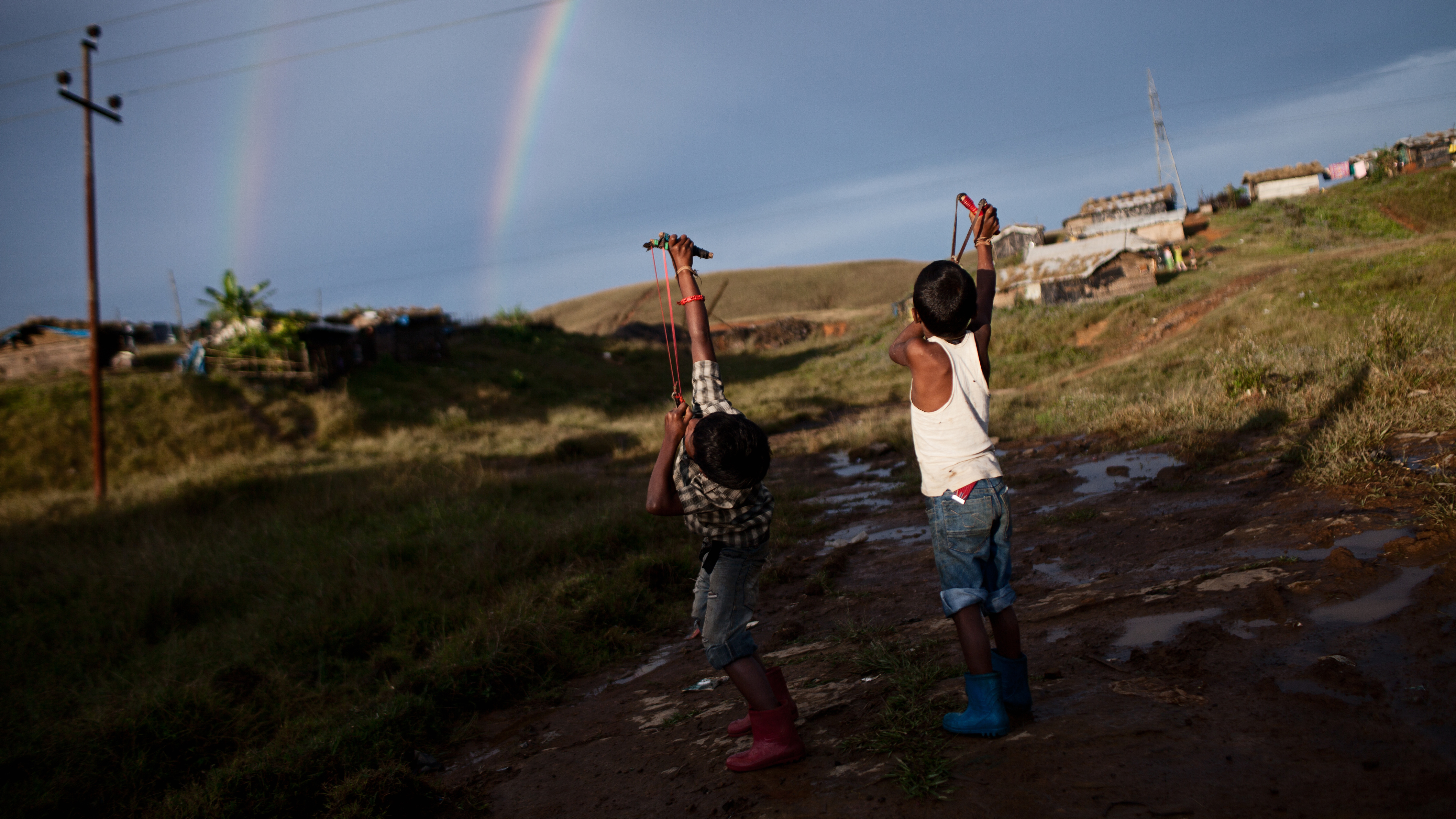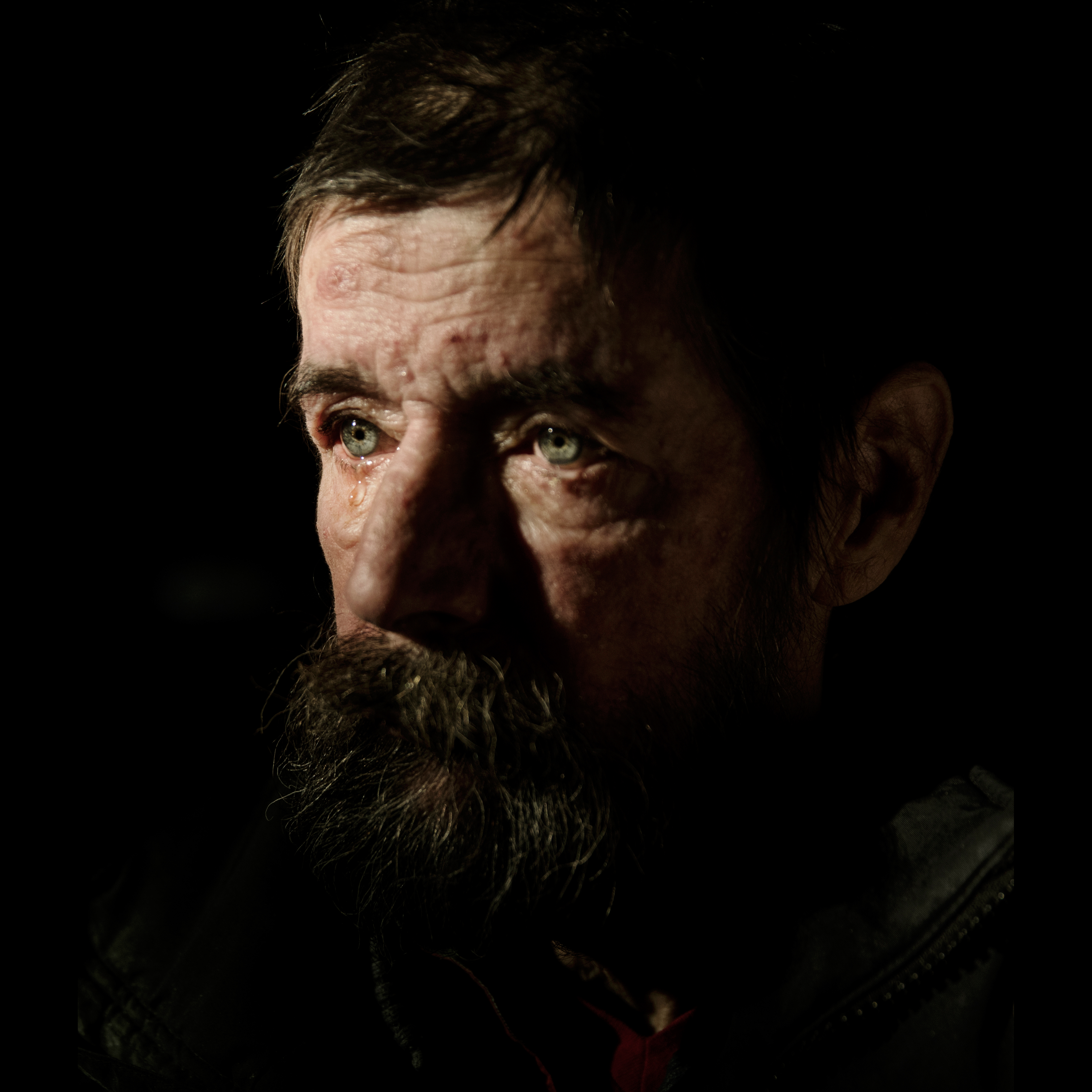
As print media declines, what does the future hold for photojournalism? Are prospects bleak? Or is there an opportunity for photographers to take control of their own destiny? Lars Boering, Managing Director of World Press Photo (WPPh) and Stephen Mayes, former Managing Director of photo agency VII and Executive Director of the Tim Hetherington Trust, give their views.
Since the early 20th century, photojournalism has been essential for our understanding of what's really going on in the world. Photographers' images have raised awareness of important issues, revealed shocking truths and prompted people – and even governments – to take action.

Stephen Mayes believes photojournalism has an important role to play in the new media world, too. "I think it's an amazingly good time for photojournalism, together with video and audio," he says. "What's throwing everyone is that it's not a good time for earning a living in photojournalism. We haven't quite worked out the business model in the new world."
"We haven't quite worked out the business model in the new world."
Stephen Mayes
Effective photojournalism is about capturing striking images that represent a broader story, and sometimes demands bravery in the face of danger. Examples are scattered through photographic history: Dorothea Lange's images of 1930s Depression-era America, Robert Capa's visceral shots of the D-Day landings in World War 2, Sir Don McCullin's reportage from the frontline of the Vietnam War, and Sebastião Salgado's provocative images of Brazilian gold miners in the 1980s.
Photojournalists have undoubtedly produced some of the most powerful and memorable pictures in the history of photography.
In recent years, the continuing power of the still photograph has been demonstrated by standout images – images such as Nilufer Demir's 2015 photographs of Aylan Kurdi, the three-year-old Syrian refugee who drowned in the Mediterranean Sea and was washed up on a Turkish beach, and Jonathan Bachman’s 2016 image of a lone woman standing serenely in front of riot police at a Black Lives Matter protest in Baton Rouge, Louisiana – were shown across the media, and had a huge worldwide impact.
Media crisis
Despite the success of high-profile images, today's photojournalists are facing an industry crisis. The circulations of printed newspapers and magazines are continuing to decline, so far fewer photojournalists are being paid to cover conflict zones and natural disasters, or to delve into social issues.
For WPPh's Lars Boering, the disruption of the established business model is the biggest threat to photojournalism's future. "The main issue is the crisis of the media, not the crisis of photojournalism itself," he says. "Although we still see a lot of newspapers and magazines, the transformation towards using screens has almost been completed. Not all photojournalists can continue to make a living any more. There's not enough money for everybody."

"If you want to monetise visual journalism, video wins," Lars continues. "Big media organisations say video is five times easier to monetise than photography [because of its advertising opportunities], which is very telling. Also, at this time, video plays a very big role in visual storytelling and visual journalism. That means photojournalism has to redefine its platform in many ways and has to find a place where the value of photojournalism can really shine."
Stephen says he realised how quickly photojournalism was changing when he started running VII photo agency in 2008. Old models such as day rates for photographers and licensing, from which the agency earned commission, were already gone. Yet at the same time, individual photographers were doing quite well – they were busy selling prints, leading workshops and getting grants and bursaries. Stephen sees this as part of an overall shift in which value moved from the photograph to the photographer.
"It's a business, so photojournalists need to be business people."
Lars Boering
His views are echoed by Lars. "Lots of good photojournalists are now creating their own social media platforms, which are connected to other big platforms that have millions of followers," he says. National Geographic photojournalist David Guttenfelder, for example, has over 1.1 million followers on Instagram.
"Some also create their own foundations that do good, whether they are concerned with the environment, nature or even refugees. In a way, these photographers have a bigger reach than ever before. Through the foundations they are able to get commercial work and sustain themselves in a way that's totally within their control."
As Lars explains, photojournalism has historically been an industry of half-products, and now the end product has evolved, as have the producers of that product. "Until now, photographers shot the images and then the magazine, newspaper or website wrote the story around it," he says.
"Now, being in control means that photographers are producing an end product [by also writing stories, shooting video or producing other media to accompany their stills], which is being acquired by others. Who you are and what you do are being sought after. It's a business, so photojournalists need to be business people, then they'll have a far better chance of making it than just depending on an editor to call them. I think what's happening is the liberation of photographers – it's part of the growing up of this industry."
Photojournalism in a 'post-truth' world
While photojournalists face economic challenges and changing ways of distributing work, it's also a time when digital image manipulation is making it harder than ever for us to decide whether what we're looking at is real or fake. The ease with which images can be manipulated to support a particular viewpoint means our need for impartial reporting is greater than ever. So in a 'post-truth' era, how can photojournalism help combat fake news?
"I don't think we're actually in a post-truth era. I think we're close to entering an era where people long for trusted sources," says Lars. "We experience it ourselves at World Press Photo. Organisations and foundations want to support us because what we show to the audience has been verified and checked, and the way it's presented is trusted. If you have your brand connected to trust, it works. The more people talk about fake news, the more they will look for trusted sources, and if you do that right it will always pay off."
"I see the future of photojournalism as very positive, and different in what it wants to achieve."
Stephen Mayes
Photojournalism in the future
In a fast-changing media world, you have to adapt to survive, and photojournalism is entering a new era. "I see the future of photojournalism as very positive, and different in what it wants to achieve," says Stephen. "In the past, you were a photojournalist if you sold pictures to print publications.
"Now, if you only sell pictures to a print publication, you're not doing a great job. You should be doing other things with your life – maybe [take pictures for newspapers and magazines] four days a week, but on the fifth day you should do something else, such as making a documentary or doing some not-for-profit work. There are lots of ways of being effective in the world – it's not just about being in print."
Whether photojournalism will sink or swim in this new age remains to be seen. When asked whether he's optimistic about its future, Lars is realistic about the challenges that lie ahead. "I'm very optimistic about visual storytelling, which is avoiding the question a little bit," Lars says. "All the new technology we see is really threatening the status quo for photojournalism and still photography. But if still photography connects itself to design and any creative means possible, then it can be the centrepiece.
"So, if you talk about visual journalistic storytelling, then the future is super bright. World Press Photo's tagline, 'connecting the world to the stories that matter', is always going to work, and we prove it on a daily basis. But if you only talk about still photography, be careful, I would say. I don't think it has a life of its own in the future. But if photojournalism is powerful enough and good enough, then it's something that will always be able to play an important role."
Photojournalists' kitbag - The key kit that the pros use to take their photographs
Camera: Canon EOS 5D Mark IV
This full-frame 30.4MP DSLR captures incredible detail, even in extreme contrast. Continuous 7fps shooting helps when chasing the perfect moment, while 4K video delivers high-definition footage. More details
Lens: Canon EF 50mm f/1.2L USM
With its incredible f/1.2 maximum aperture and ultrasonic autofocus, this super-fast lens is a consummate low-light performer. More details
Lens: Canon EF 24-70mm f/2.8L II USM
This professional-quality standard zoom lens offers outstanding image sharpness and a robust L-series build. Its constant f/2.8 aperture enables you to take superb photos even in low light, and to control depth of field with ease. More details
To watch the video and read more about the future of photojournalism, visit here

Get daily insight, inspiration and deals in your inbox
Sign up for breaking news, reviews, opinion, top tech deals, and more.